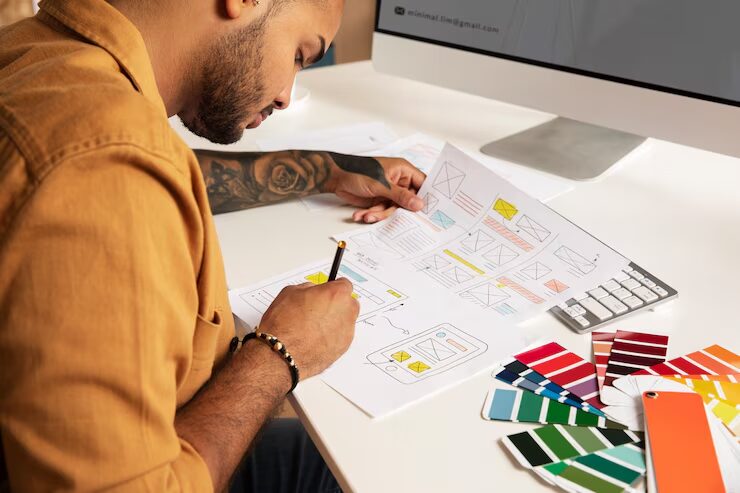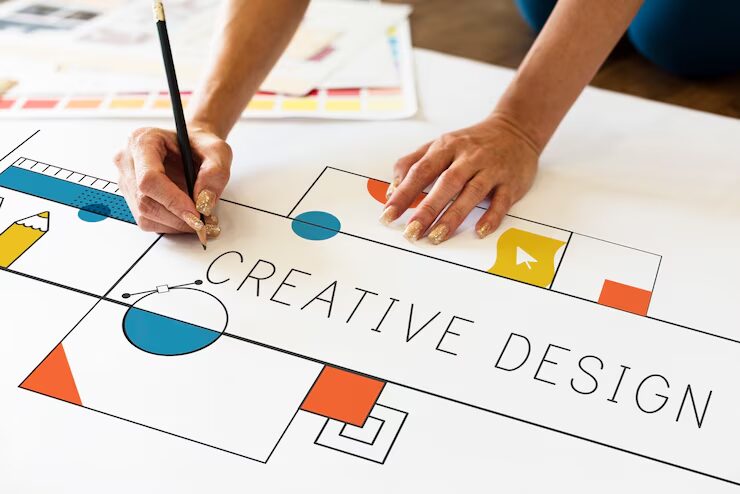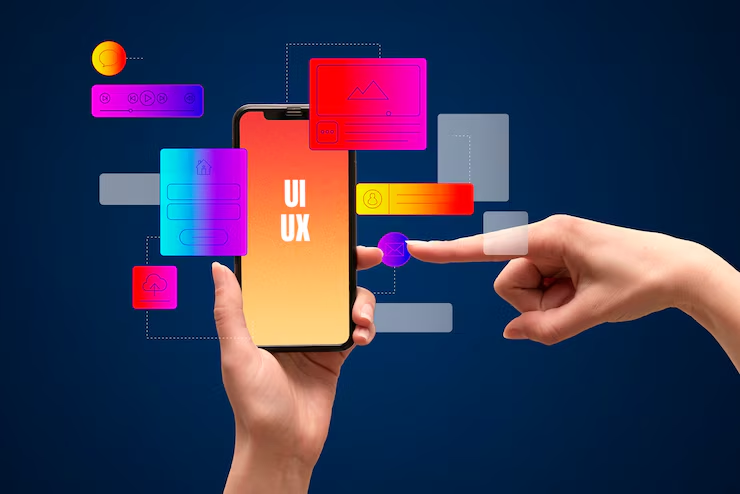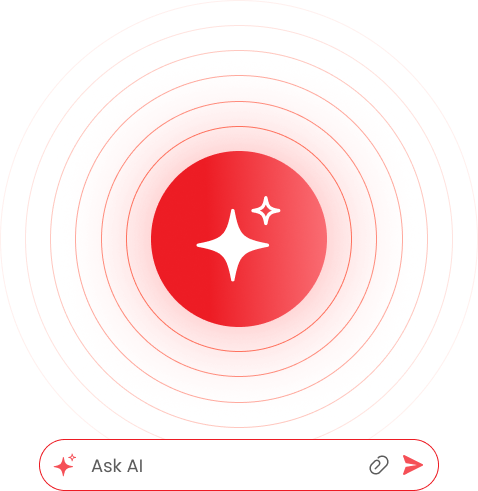Master UI/UX Design
with AI-Integration
- Online and Offline Classes
- Certificate of Completion
- 100% Placement assistance
- Industry focused curriculum
- Timely assignments
- Mock interviews
Harness the power of AI in our comprehensive UI/UX Design Course to create intelligent, engaging, and truly user-centered digital experiences.
Unlock Your Design Potential
Master UI/UX Principles with Ai-powered tools and hands-on projects

Uncovering user needs and behaviours to inform design.

Foundational guidelines for exceptional user experiences.

Bringing ideas to life for testing and refinement.

Uncovering user needs and behaviours to inform design.
AI Powered Learning
35+ Tools
A complete guide to fast-tracking your journey with adaptive AI support, real-time insights, and a community-first learning approach.
Limited Time Offer: 30% Off All Programs
A complete guide to fast-tracking your journey with adaptive AI support, real-time insights, and a community-first learning approach.
Features of The Course
Our UI/UX curriculum is tailored to provide you with a comprehensive understanding of user-centered design principles and practices
Future-Proof Your Career with AI-Powered Courses
Our job-ready and AI-enhanced courses are meticulously designed to equip you with the in-demand skills and cutting-edge knowledge needed to secure a fulfilling and stable career in today's rapidly evolving job market.
Hands-on Training with AI Design Tools & Assistants
Learn to leverage the latest AI-powered design tools for tasks such as wireframe generation, style guide creation, A/B testing variant suggestions, and even predictive usability analysis. The course would provide practical experience with these cutting-edge tools, preparing you for the future of design workflows.
Data-Driven Design Insights through AI
Understand how AI can analyze vast amounts of user data (e.g., heatmaps, user session recordings, survey results) to uncover deep insights into user behavior and preferences. The course would teach you how to use AI to make more informed, data-backed design decisions, leading to more effective and user-centric products.
Exploring AI Ethics & the Future of UX
This module would delve into the evolving role of AI in the design industry, discussing its impact on job roles, the creative process, and importantly, the ethical considerations. You'll explore topics like bias in AI-generated designs, accessibility, and designing responsible AI interactions to ensure you are a forward-thinking and ethical designer.
Course Curriculum
Our UI/UX curriculum is tailored to provide you with a comprehensive understanding of user-centered design principles and practices
Course Module
Session
50+
Duration
95hrs +
Skill Level
50+
- UI vs UX: Concepts, roles, and career tracks
- Design Thinking & User-Centered Design Process
- Introduction to Figma for wireframing and visual design
- Overview of key AI tools:
- Figma AI, Uizard, ChatGPT
- Understanding how AI assists in layout, design patterns, and ideation
- Building on their foundation, students now learn to turn ideas into wireframes and interactive prototypes.
- They develop user personas and journey maps to better understand their audience.
AI tools are introduced for enhancing user research—simulating insights, trends, and even feedback scenarios. - Students create a clickable prototype of a simple app or website.
- These prototypes are reviewed and refined through peer collaboration and AI-generated suggestions.
- This month focuses on testing and refining designs through usability testing techniques—both live and AI-enhanced.
- Students learn how to make their designs accessible to all users by applying principles like inclusive color contrast and readable typography.
- They explore how personalization powered by AI shapes user experience in real apps.
- Using feedback from test users and AI simulations, students iterate on their designs.
- The goal is to improve both function and user satisfaction based on real usability standards.
- The final month is dedicated to creating a capstone project that reflects each student’s unique interests and skills.
- They design a complete app or website experience from scratch, iterating with usability feedback and applying accessibility standards.
- Alongside their project, students begin building a personal portfolio to showcase their work and design process.
- They also practice presentation and critique skills to prepare for a final demo day.
- Career pathways in design and AI-enhanced creative roles are explored to inspire next steps.
- 2 Main Project (App and Website): A complete design project developed from sketch to full prototype.
- 1 Mini-Project: A small team-based design completed in Week.
- 25+ Screens/Layouts: Created for mobile, tablet, and desktop.
- 10-15 Icons and Graphics: Custom-designed assets for projects.
- 3-5 Prototypes: Including basic, advanced, and responsive versions.
- 1 Design System and Style Guide: Documenting visual elements and standards.
- 3-5 Research Artifacts: Personas, user journey maps, and competitive analysis.
- Design Confidence: Students will be able to confidently create user-centered digital designs using industry tools like Figma, applying core UI/UX principles effectively.
- AI Integration Skills: Learners will understand how to use AI tools for ideation, user research, testing, and personalization in the design process.
- User Research & Testing: Students will gain practical experience conducting user research, building personas, and performing usability tests to improve their designs.
- Portfolio-Ready Projects: By the end of the course, each student will complete a polished capstone project and design portfolio showcasing their skills and process.
- Career & Future Readiness: Students will be equipped with foundational knowledge and hands-on experience to explore careers in design, tech, or creative AI fields
Course Completion Certificate
Award Yourself for your Hard Work
Proudly display your certificate and show the world that you’ve accomplished with our program.

Stay ahead in UI UX Design
Get the best resources delivered to your inbox.
Upcoming Batch Alert!
Are you ready to start your career journey with Felix? Our next batch is starting soon. Join a community of like-minded individuals and learn from industry experts.
Master UI/UX Design with AI Integration
12th July, Saturday
11:30 AM to 01:30 PM
Pune.
AI-Powered Full Stack with Angular JS
12th July, Saturday
11:30 AM to 01:30 PM
Vimannagar.
Master UI/UX Design with AI Integration
12th July, Saturday
11:30 AM to 01:30 PM
Mumbai.
AI-Powered Full Stack with Angular JS
12th July, Saturday
11:30 AM to 01:30 PM
Ahmedabad.
Hear from Our Graduates: Real Stories of Success
Hear about Arohi’s journey from Chemical engineer to UI/UX Designer
Frequently Asked Questions
Everything You Need to Know About UI/UX Design.
What is the UI/UX course about?
Ans: The UI/UX course is a comprehensive program designed to teach you the skills and knowledge required to become a professional UI/UX designer. You’ll learn about user research, prototyping, design thinking, and more, with hands-on projects and real-world examples.
Who is the course suitable for?
The course is suitable for anyone with an interest in design, technology, and user experience. Whether you’re a graphic designer, software developer, marketer, or just starting out, you’ll benefit from the knowledge and skills you’ll gain in the course.
What do I need to enroll in the course?
To enroll in the course, you need to have a computer and internet access. No prior experience or qualifications are required, as the course is suitable for all levels.
How long is the course?
The course duration varies depending on the program you choose. We offer flexible options, from full-time immersive programs to part-time online courses, to fit your schedule and learning style.
What support will I receive during the course?
You’ll receive support from our expert instructors, mentorship opportunities, and access to a community of like-minded individuals. Our goal is to ensure that you have all the resources and guidance you need to succeed in the course.
What happens after I complete the course?
After completing the course, you’ll be awarded a course completion certificate and will have the skills and knowledge to start your career as a UI/UX designer. You’ll also have access to our alumni network and career services to help you find your first job in the field.
UI/UX basics
Answers to Common Questions About UI/UX.
1. What are some basic principles of UX design?
Some basic principles of UX design include user-centered design, usability, accessibility, and user feedback. UX designers should focus on creating designs that meet the needs and goals of users, and continuously gather feedback to improve the user experience.
2. What is a wireframe?
A wireframe is a visual representation of a website or application that outlines the layout and structure of its content and functionality, without including any design elements. Wireframes are used to plan and prototype designs before the visual design stage.
3. What is a prototype?
A prototype is an early version of a website or application that is used to test and refine its functionality, usability, and design before development begins. Prototypes can be low-fidelity, such as sketches or wireframes, or high-fidelity, with detailed designs and interactions
4. What is responsive design?
Responsive design is an approach to web design that enables a website to adjust and optimize its layout and content for different screen sizes and devices, such as desktops, tablets, and smartphones. Responsive design ensures that a website is accessible and usable on all devices.
5. What is accessibility?
Accessibility is the practice of designing websites and applications to be usable and accessible to all users, including those with disabilities or special needs. Accessibility includes considerations such as providing alternative text for images, using color contrast to aid readability, and enabling keyboard navigation.
6. What is user testing?
User testing is a method of evaluating a website or application by observing users as they attempt to complete specific tasks, and gathering feedback on the ease of use, effectiveness, and user satisfaction. User testing helps designers identify and address usability issues and improve the user experience UI UX development
7. What is UI/UX development?
UI/UX development is the process of designing and developing user interfaces and user experiences for digital products such as websites, mobile apps, and software applications.
8. What is the difference between UI and UX?
UI, or user interface, refers to the visual and interactive elements of a digital product, such as buttons, menus, and icons. UX, or user experience, refers to the overall experience a user has while using a digital product, including factors such as ease of use, accessibility, and satisfaction.
9. What are some common tools used in UI/UX development?
There are many tools used in UI/UX development, including design software such as Sketch, Figma, and Adobe XD, prototyping tools such as InVision and Axure, and collaboration and project management tools such as Trello and Asana.
10. What are some best practices for UI/UX development?
Some best practices for UI/UX development include conducting user research to understand user needs and preferences, creating clear and consistent visual design systems, prioritizing accessibility and usability, and regularly testing and iterating on designs based on user feedback.
11. What are some key trends in UI/UX development?
Some key trends in UI/UX development include the use of minimalistic design and bold typography, the integration of voice interfaces and AI-powered experiences, and the focus on mobile-first and responsive design to accommodate various screen sizes and devices. UI Course
1. What is a UI course?
A UI course is a training program that teaches the principles and practices of user interface (UI) design for digital products such as websites, mobile apps, and software applications.
2. What will I learn in a UI course?
In a UI course, you will learn the fundamental principles of UI design, including topics such as visual design, typography, color theory, layout and composition, and user experience (UX) design. You will also learn how to use industry-standard design tools and techniques to create effective UI designs.
3. Who can benefit from taking a UI course?
Anyone who is interested in designing user interfaces for digital products can benefit from taking a UI course. This includes designers, developers, product managers, and entrepreneurs who want to improve their UI design skills and create more effective digital products.
4. What are some common topics covered in a UI course syllabus?
Some common topics covered in a UI course syllabus include visual design principles and techniques, typography and font selection, color theory and palettes, design software tools such as Sketch or Adobe XD, wireframing and prototyping, and user testing and iteration.
4. What are some common topics covered in a UI course syllabus?
The prerequisites for taking a UI course may vary depending on the program, but typically include a basic understanding of design principles and computer skills such as familiarity with design software tools and file management.
6. What are some job opportunities for UI designers?
UI designers can work in a variety of industries and organizations, including tech companies, design agencies, and startups. Some common job titles for UI designers include UX/UI Designer, Web Designer, Mobile App Designer, and Product Designer.
1. What is UX jargon?
UX jargon refers to the specific terms and language used in the field of user experience design (UX) to describe concepts, methods, and practices.
2. What is a wireframe?
A wireframe is a visual representation of a website or application that outlines the layout and structure of its content and functionality, without including any design elements.
3. What is a prototype?
A prototype is an early version of a website or application that is used to test and refine its functionality, usability, and design before development begins.
4. What is a user persona?
A user persona is a fictional character created to represent the characteristics, needs, and behaviors of a specific user group, and is used to guide design decisions and user research.
5. What is information architecture?
Information architecture is the process of organizing, structuring, and labeling content in a way that makes it easy to find, navigate, and understand for users.
6. What is a usability test?
A usability test is a method of evaluating a website or application by observing users as they attempt to complete specific tasks, and gathering feedback on the ease of use, effectiveness, and user satisfaction.
7. What is a heuristic evaluation?
A heuristic evaluation is a method of evaluating a website or application by using a set of predefined criteria or principles, such as Nielsen’s 10 usability heuristics, to identify potential usability issues and design problems.
8. What is responsive design?
Responsive design is an approach to web design that enables a website to adjust and optimize its layout and content for different screen sizes and devices, such as desktops, tablets, and smartphones.
9. What is accessibility?
Accessibility is the practice of designing websites and applications to be usable and accessible to all users, including those with disabilities or special needs.
10. What is a user flow?
A user flow is a visual representation of the steps that a user takes to complete a specific task or goal within a website or application, and is used to identify potential usability issues and optimize the user experience.
